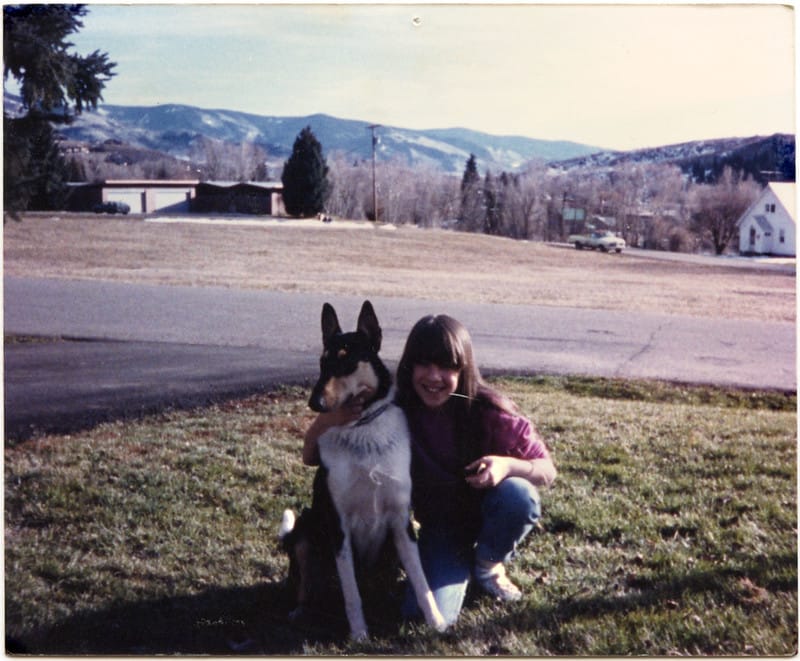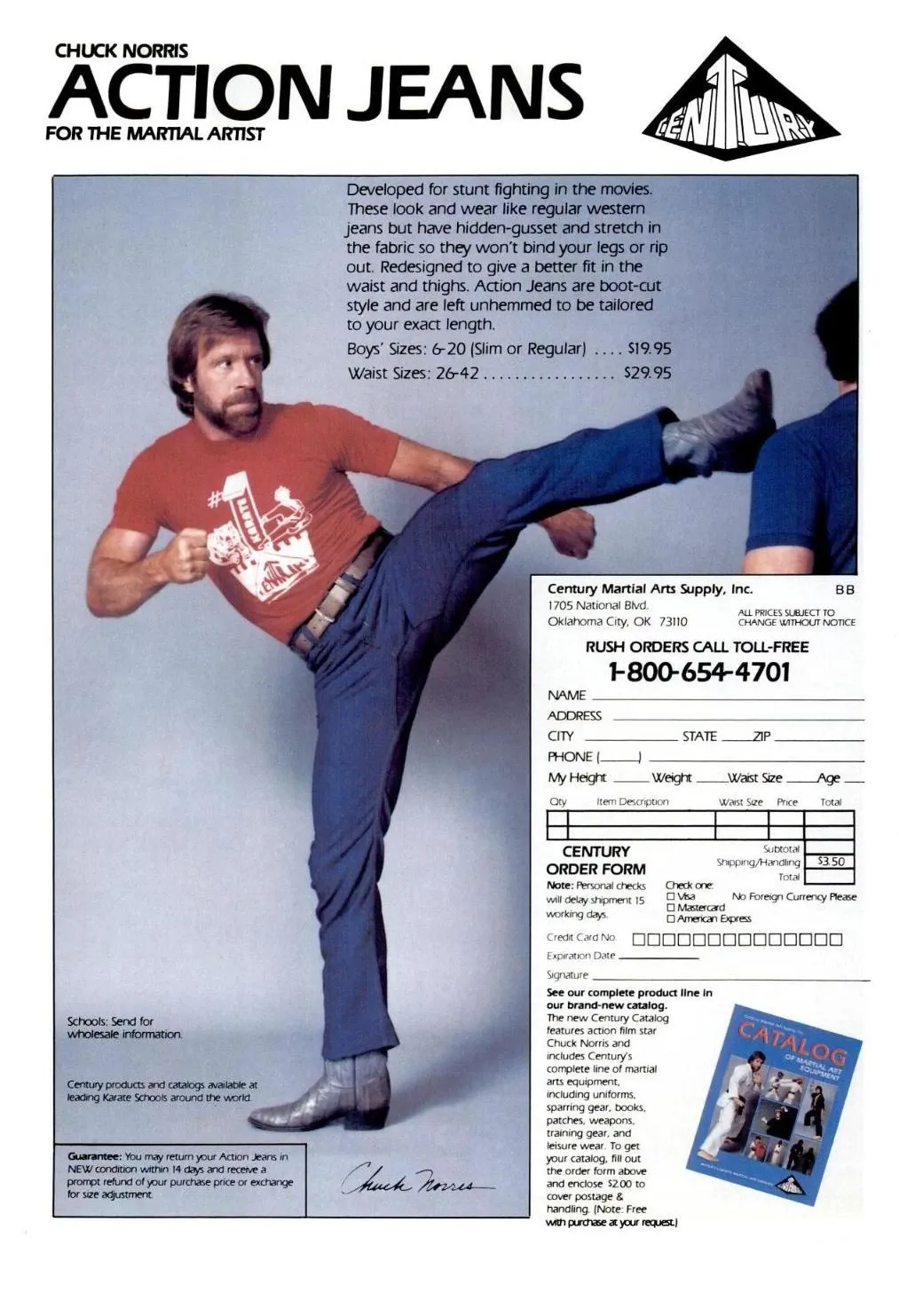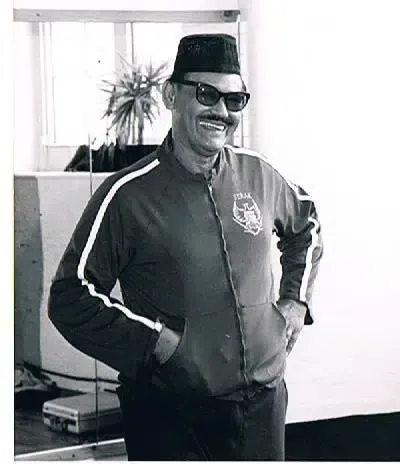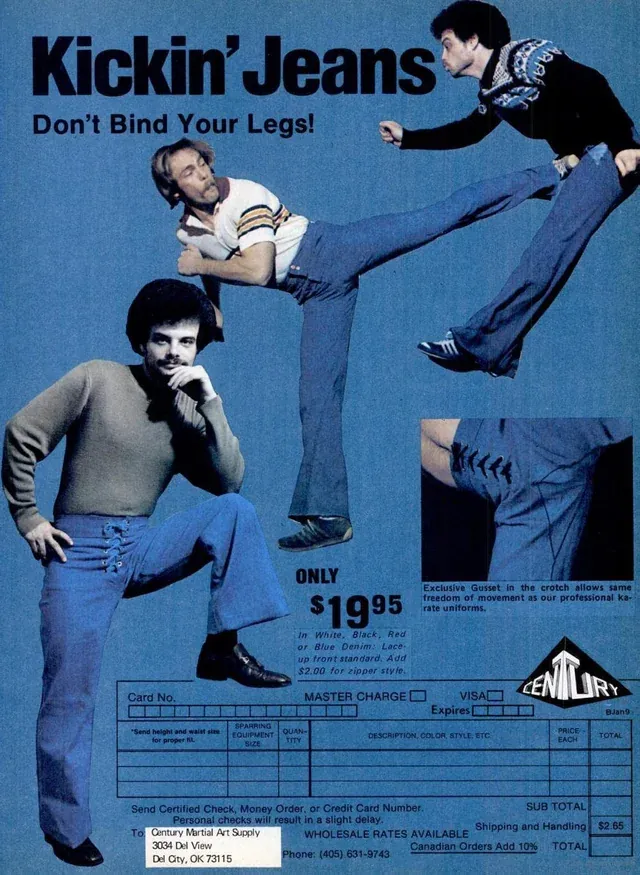Calling on the Indomitable Spirit

When I was 16 years old, I got my black belt in taekwondo. My parents had wanted me to learn some sort of self defense, so they enrolled me when I was nine. But I never had a real interest in it outside of my practice. My older brother was already a student before me, well on his way to a black belt, but he was big into martial arts. Copies of Black Belt magazine littered the floor of his room, which I assume he read cover to cover. All I remember are the ads for Action Jeans (originally Kickin' Jeans), featuring Chuck Norris and other lesser known western karate luminaries. Action Jeans, for those too young to remember, were jeans made with a stretch denim that didn't "bind your legs" and "a unique hidden gusset" that supposedly allowed you to land a round kick without blowing out the crotch of your Wranglers.
I grew up in a ski town that had a year-round population just north of 6000 people. The population would temporarily balloon in the winter when the ski resort would open, and would eventually grow in a more permanent way once a better airport was built some 45 minute drive outside of town, an airport that didn't require tourists to either drive three plus hours through the Rocky Mountains or fly over them in a small commuter plane my family nicknamed the Vomit Comet. Once the new airport arrived, the local powers that be quickly sorted out how to market the resort year-round, and developers inevitably came to build condos and shopping centers.

My family moved to town only three years before I began learning taekwondo, when it was still a small and sleepy place in the months free from broke ski bums and rich Texans. When I think about it now, it feels a little surprising that there were martial arts classes at all, although it turns out the local martial arts club had existed in some form since 1977, and thus a dojo of sorts. I started classes right around the time The Karate Kid came out, but that was mere coincidence and the similarities between Daniel LaRusso and me started and ended there.
In a way, it feels misleading to call where we trained a "dojo." I mean, it was a dojo in spirit and function, but it's not at all what you might imagine. I remember practicing in at least two different locations (there may have been more), and both spaces I remember were converted office or retail spaces in buildings on the far outskirts of town at the opposite end from the ski mountain. The floors of at least one location were covered with some sort of 1980s gray industrial carpeting. Our instructors were a married couple named Rob and Wendy, whose last name I cannot for the life of me remember and who I believe divorced after I went off to college. Rob and Wendy were both very serious about martial arts, but they differed in their approach. Taekwondo has a more diverse curriculum than you might imagine, incorporating forms, sparring, breaking boards, throwing, meditation, aerobic exercise, and more. With Wendy, we got our aerobic exercise by literally doing 1980s aerobics, fully suited up in our karate gis and belts but with sneakers on, bending and bouncing to Phil Collins' "No Jacket Required" on cassette. With Rob, we focused more on beating the shit out of each other.
I don't know what style we practiced specifically, or whether it even was an official style. It was definitely not the lighter weight speed style of the sparring you've probably seen, such as at the Olympics, with fighters wearing a trunk protector and headgear, plus forearm and shin guards. When sparring, we did not wear a trunk protector, headgear, forearm guards, or shinguards. We wore hand and foot pads and a mouthguard. Men wore a cup. That was it. And while I'm sure my partners did not go absolutely HAM on me when I was 10 or 11 years old, a lot of the sparring we did was a slugfest. I still vividly remember when I perfectly timed and placed a sidekick that actually forced Rob to stop dead in his tracks and pop up slightly, the way a heavy bag would. He got me back plenty, especially during my black belt test when I had to do 3-on-1 sparring. In some ways I was lucky because, when the timer started and my three opponents rushed me, one of them immediately me toppled to the ground. That allowed me to hold onto one of Rob's legs, thus neutralizing the weapon I was most worried about for the bulk of that very long 45 seconds of mayhem.
The text that was most important in our dojo was Bruce Lee's The Tao of Jeet Kune Do, which we were supposed to read but of course I never actually did. The teachings of this text were combined with the five tenets of taekwondo, and all told that formed the philosophy of our practice, as well as the structure for our exams that allowed us to advance in rank. The five tenets are courtesy, integrity, perseverance, self-control, and indomitable spirit. All were very important in different ways. I don't know how other schools do their testing, but we were judged on these tenets during tests, as well as on our forms (the same as kata in karate), sparring, and breaking.

If you know me in person, and especially if you are close to me, it will not come as a surprise that I didn't always get the highest marks on kata. Attention to detail and dedicated repetition of tasks have never been my strongest suit, not now and certainly not when I was 13. This meant I also struggled with breaking, which requires not only some amount of upper and lower body strength, maybe more than my noodle limbs had at the time, but also a high degree of precision. Breaking one, two, and eventually three boards requires you to strike the board in the center, with both speed and good form. Otherwise you repeatedly slam into the board (or the hands of the people holding the board) with your knuckles, the side of your hand, or the heel of your foot. Or, if you were me, all three, over and over. And over.
As you might expect, the difficulty level increased with each belt or stripe test. One-on-one sparring became 2-on-1, which became 3-on-1. Breaking one board became breaking two, and then three. But each test was the same for me when it came to breaking. I never, ever got better at it. After 30 minutes – thirty! minutes! – of trying to break three boards with a sidekick during my black belt test, I was sobbing with frustration but refused to give up, even though by then I'd been given the option to quit trying without penalty. But I refused. I didn't want to advance to black belt without breaking those fucking boards, no matter how long it took and no matter how much I bruised my foot or wore out the people holding the boards. Finally the timing, speed, and heel position came together, and I felt all three boards buckle and crack behind my heel. As with every other test that had come before it, alongside my lower marks for form were the highest possible marks for perseverance and indomitable spirit.

When I think back now on the seven years I spent learning martial arts, I of course see those years through the lens of extreme distance and hindsight. It was decades ago! I think less about the tedium of repetition and more about the equalizing power of what I saw and learned. Where else would I get to side kick my junior high Spanish teacher dead in the guts? Or, when our curriculum expanded to include hapkido, learn to throw our town's sheriff over my shoulder? I also got to see a presentation of an Indonesian martial art called pencak silat, when a group of practitioners came to our tiny town. I will never forget watching a man referred to as Pendekar Paul get up to demonstrate. He was not a tall or big man, in fact quite short with a small belly. I think he smoked. Rob, who was significantly bigger, stood to demonstrate with him. Suddenly, after barely seeming to move, Pendekar Paul had Rob down on the ground. It was one of the most extraordinary physical feats I will ever see, and to this day I still don't really know what he did or how he did it. I think even Rob was surprised at how quickly and smoothly he found himself on the floor. Funny that only in writing this did I learn that Pendekar Paul was Paul de Thouars, an actual legend of martial arts.
If you have read to this point, then thank you for indulging me thus far. You're probably wondering what any of this has to do with tech or the internet. I honestly don't know. When I sat down and looked at all the headlines, especially the ones about Meta – how it trained its AI on pirated porn, how it continues to lure top AI talent with offers ranging from $50 million to $1 billion (god, I wish I were joking) – I just felt so, so tired. I didn't really want to write a newsletter, but I promised myself I would not skip a Wednesday this year. So I let my mind wander. I thought about the internet, with its own equalizing powers. Sometimes in all the bullshit, it's easy to lose sight of what it promised.
But I also thought about its original purpose, back in the Cold War when there was a need for a military defense system. Military origins made me think about the name "martial arts," something I'd weirdly never considered in much depth. This of course led me to my own experience. I thought about how martial arts evolved to be about much more than warfare and fighting, encompassing social, spiritual, and philosophical development before the west commercialized them and they became primarily enjoyed by most practitioners as sports. And as I fell down rabbit holes and wended my way through memories, I wound up back at our internet. Will our internet ever really distance itself from its origins? What will happen to the strands of it that keep trying to diverge, or at least to encompass that are less martial or commercial? Could we ever have built something that was better than this?
Maybe it's a stretch. Maybe I just wanted to write about doing taekwondo as a kid in a small town. Maybe it's an artifact of aging, the way recent years feel so compressed, like everything is changing and time is moving faster than it used to, and I'm remembering a world that in some ways doesn't totally exist anymore. But something about these past few years, and specifically something about generative AI, feels different. I talked to my dad about it recently. He first started working with computers in the 1960s, when he was in the military, and he's still programming and learning new languages. He said that in every decade someone has declared that this new computer development will replace that human job or function, and yet each time, a person was still needed. (He also said when he's explored GenAI for programming, it churns out garbage and he spends more time fixing it than he would have just writing the code himself.) That conversation partly inspired my newsletter last week.
When I thought about it again though, I thought about how much the world changed from the 1960s and the 1990s, and from the 1990s to the 2020s. We can only experience change relative to the time we're in. So maybe what I really wanted to write about was a little girl who always got her highest marks in perseverance and indomitable spirit, because those are two things I think we're going to need a lot more of before we're through.

Until next Wednesday.
Lx
Leah Reich | Meets Most Newsletter
Join the newsletter to receive the latest updates in your inbox.
